
Hugh John Lofting was an English American writer trained as a civil engineer, who created the classic children's literature character Doctor Dolittle. The fictional physician to talking animals, based in an English village, first appeared in illustrated letters to his children which Lofting sent from British Army trenches in the First World War. Lofting settled in the United States soon after the war and before his first book was published.

Doctor Dolittle is a 1967 American musical comedy film directed by Richard Fleischer and starring Rex Harrison, Samantha Eggar, Anthony Newley, and Richard Attenborough. It was adapted by Leslie Bricusse from the novel series by Hugh Lofting. The screenplay primarily fuses three of the books, The Story of Doctor Dolittle (1920), The Voyages of Doctor Dolittle (1922), and Doctor Dolittle's Circus (1924).

Doctor John Dolittle is the central character of a series of children's books by Hugh Lofting starting with the 1920 The Story of Doctor Dolittle. He is a physician who shuns human patients in favour of animals, with whom he can speak in their own languages. He later becomes a naturalist, using his abilities to speak with animals to better understand nature and the history of the world.

The Story of Doctor Dolittle, Being the History of His Peculiar Life at Home and Astonishing Adventures in Foreign Parts (1920), written and illustrated by the British author Hugh Lofting, is the first of his Doctor Dolittle books, a series of children's novels about a man who learns to talk to animals and becomes their champion around the world. It was one of the novels in the series which was adapted into the 1967 film Doctor Dolittle.

The Voyages of Doctor Dolittle is the second of Hugh Lofting's Doctor Dolittle books. Published in 1922, the writing style is aimed at a more mature audience and features more sophisticated illustrations than its predecessor. The novel's scope is vast; it is nearly five times as long as its predecessor and is divided into six parts. It won the Newbery Medal for 1923.

Doctor Dolittle's Zoo was written and illustrated by Hugh Lofting in 1925. In the book, Doctor Dolittle returns from his voyages and sets his house in order. This includes expanding his zoo to include a home for crossbred dogs and a club for rodents. Doctor Dolittle's Zoo is different from all others because there are no cages; the animals stay there voluntarily and are free to leave whenever they want. The doctor also takes time to solve a mystery with the aid of Kling, the Dog Detective.
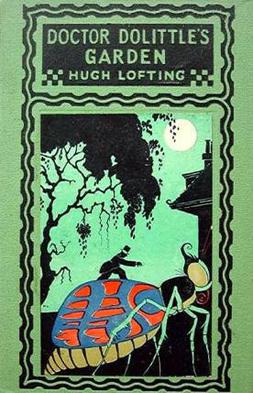
Doctor Dolittle's Garden (1927) is structurally the most disorganised of Hugh Lofting's Doctor Dolittle books. The first part would fit very well into Lofting's 1925 novel Doctor Dolittle's Zoo, which this book follows. The rest of the book forms a reasonably coherent narrative. From now on, Lofting would write the books in chronological order, and this book has to link the earlier, more light-hearted type of story with what was to come. The lack of structure is compensated for by Lofting's skill in subtly shifting the tone of his writing as the book progresses.

Doctor Dolittle in the Moon is a 1928 children's book by Hugh Lofting. The book tells the story of Doctor Dolittle who studies mystical animals and plants on the Moon. While on his adventure, his friends on Earth long for his return home.

Doctor Dolittle's Return, published in 1933, is the ninth book in Hugh Lofting's Doctor Dolittle series. The book was published five years after the publication of Doctor Dolittle in the Moon and continues the plot line begun in that book. Lofting originally intended to end the series with Doctor Dolittle in the Moon, but for some reason changed his mind and the book was published.

Doctor Dolittle and the Secret Lake is a Doctor Dolittle book written by Hugh Lofting. The book was published posthumously in 1948, 15 years after its predecessor. Fittingly, it is the longest book in the series, and the tone is the darkest; World War II took place before the book was published, during which Lofting had published his 1942 anti-war poem Victory for the Slain. The book contains passages that almost border on being misanthropic with some very powerful passages concerning war and Man's inhumanity to man.
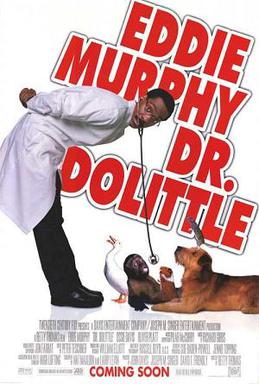
Dr. Dolittle is a 1998 American fantasy comedy film directed by Betty Thomas, written by Larry Levin and Nat Mauldin, and starring Eddie Murphy in the title role with Ossie Davis and Oliver Platt. The film was based on the series of children's stories of the same name by Hugh Lofting, but used no material from any of the novels; the main connection is the titular character Dr. John Dolittle and his ability to talk to animals, although the Pushmi-Pullyu, a much-loved feature of the books, notably makes a very brief appearance in a couple of scenes. The first novel, The Story of Doctor Dolittle (1920) had originally and previously been filmed in 1967 as a musical of the same name, which was a closer adaptation of the book. The 1967 film was a box office bomb, but became a cult classic.
Doctor Dolittle is a 1970–1971 Saturday morning animated series produced by DePatie–Freleng Enterprises in association with 20th Century Fox Television. The series is loosely based on the books by Hugh Lofting, as well as the 1967 film of the same title which center around Doctor Dolittle, an animal doctor who has the ability to talk to animals.
Doctor Dolittle may refer to:
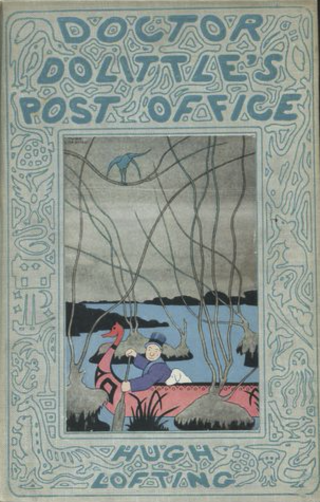
Doctor Dolittle's Post Office is the third of Hugh Lofting's Doctor Dolittle books. Set on the West Coast of Africa, the 1923 book follows the episodic format of most other books in the series. In the beginning of the book, Doctor Dolittle helps to capture a slave trader's ship, then organizes the postal service of a small African kingdom, Fantippo, ruled over by King Koko. Mobilizing migrating birds to carry people's mail from continent to continent, Doctor Dolittle effectively anticipates the 20th century invention of air mail. Over the course of later chapters, he discovers a hidden island populated by prehistoric creatures, gets thrown into another African jail, invents animal alphabets, and defeats at least two armies. Each of the animals in the Dolittle family also tells a personal story. The postal program grows into a worldwide postal and publishing service for the benefit of animals everywhere.
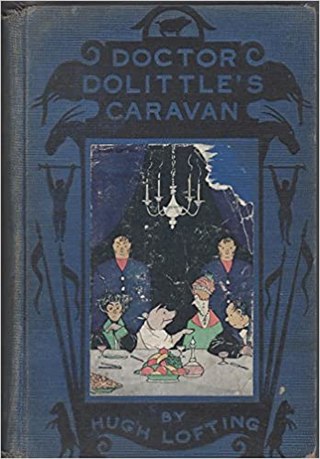
Doctor Dolittle's Caravan is a novel written by Hugh Lofting and published in 1926 by Frederick A. Stokes. It deals with the titular character's bird opera, centering on a female green canary named Pippinella. It is one of many books Hugh Lofting authored about Doctor John Dolittle.
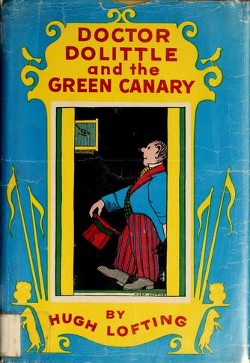
Doctor Dolittle and the Green Canary is a Doctor Dolittle book written by Hugh Lofting. Although much of the material had been printed originally in 1924 for the Herald Tribune Syndicate, Lofting planned to complete the story in the book form but never finished before he died. Lofting's wife's sister, dancer Olga Fricker, completed the book and was published posthumously in 1950. Everything except the first and last chapter are by Lofting.
Al Perkins (1904–1975) was the writer of several children's books, including Hand, Hand, Fingers, Thumb, The Digging-est Dog, and The Ear Book. He also wrote early titles in the Beginner Books and Bright and Early Books series.

Doctor Dolittle's Puddleby Adventures is a collection of short stories written and illustrated by Hugh Lofting, published posthumously as twelfth and last in the Doctor Dolittle series of children's fiction. The stories and illustrations were distributed during the 1920s by the Herald Tribune Syndicate and all may been published in the New York Herald Tribune newspaper, among others. The 1952 collection was their first appearance in book form.
The Dr. Dolittle film series consists of American feature-length family films, based on the book series written by Hugh Lofting, Doctor Dolittle. Like their source material, the plot of each respective film follows the titular characters' adventures given their abilities to communicate with animals. The series consists of the original fantasy-period piece musical movie, a contemporary comedy remake, and a period piece fantasy-adventure reboot.















